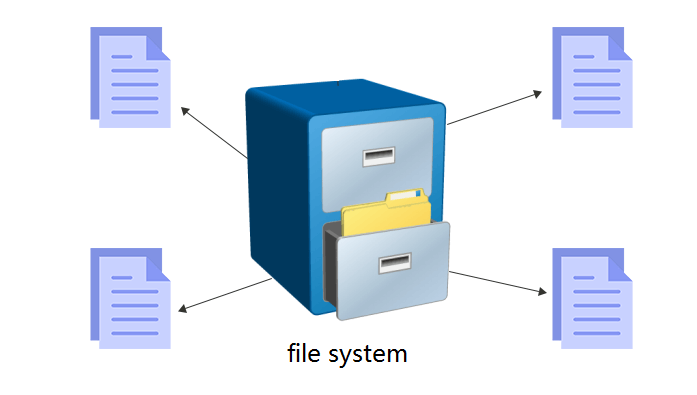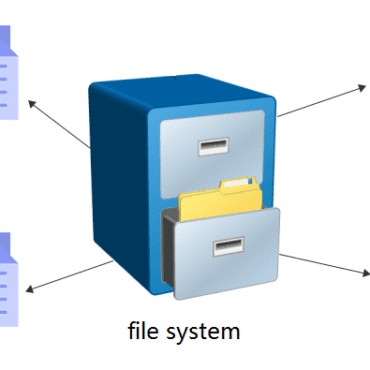
Latent Fingerprint Kits in India
Unveiling the Hidden: The Role of Latent Fingerprint Kits in Modern Forensics Fingerprints have long been one of the most reliable forms of personal identification in criminal investigations. Yet, many ...


HardDriveRecovery Omprakash Singh todayNovember 12, 2025

In the realm of digital forensics, understanding how data is stored, accessed, and deleted is the cornerstone of uncovering digital evidence. This is where file system forensics comes into play. Every operating system—Windows, Linux, or macOS—relies on a specific file system to organize and manage data on storage devices.
At Hawk Eye Forensic, our experts analyze these file systems to retrieve hidden, deleted, or corrupted information critical for criminal investigations, corporate inquiries, and data recovery cases.
File system forensics involves the examination and interpretation of data structures that manage how information is stored on digital media. It helps forensic experts:
Recover deleted files and folders
Identify tampering or unauthorized access
Trace file creation and modification times
Validate the authenticity of digital evidence
Essentially, file system analysis allows investigators to reconstruct events and preserve data integrity for legal proceedings.
Each file system has a unique way of handling data. Let’s look at the most common ones encountered during forensic examinations.
The FAT file system, developed by Microsoft, is one of the oldest and simplest. It’s still used in USB drives, memory cards, and older operating systems.
Forensic Highlights:
Simple structure makes it easier for recovery of deleted data.
Stores file allocation information in a table that maps file clusters.
Limited file size and volume support (e.g., FAT32 supports up to 4GB per file).
Time stamps and directory entries can be analyzed to reconstruct user activity.
Challenges:
No built-in file permissions or journaling.
Easily overwritten data due to lack of advanced recovery features.
Used in Windows NT and later versions, NTFS is a modern and secure file system. It offers improved reliability and forensic traceability.
Key Forensic Features:
Maintains a Master File Table (MFT) — a database of every file and directory.
Includes journaling for transaction logging (via $LogFile).
Supports file compression, encryption (EFS), and permissions.
Time stamps such as Created, Modified, Accessed, and Entry Modified (MACE) can help create a detailed activity timeline.
Forensic Advantage:
NTFS retains significant metadata even after file deletion, allowing experts to recover evidence long after a user has attempted to erase it.
Developed for flash memory devices, exFAT bridges the gap between FAT32 and NTFS.
Key Points:
Supports larger files and partitions than FAT32.
Common in external hard drives and SDXC cards.
Does not support journaling, making it less resilient to corruption but easier to analyze.
Forensic Insight:
Investigators can extract file timestamps, allocation information, and potential remnants of deleted files.
Apple’s macOS uses HFS+ (Hierarchical File System Plus) and the newer APFS (Apple File System).
APFS Forensic Features:
Uses copy-on-write mechanism to prevent data overwriting.
Includes strong encryption support and snapshots for backup.
Requires specialized forensic tools for parsing due to proprietary structure.
Forensic Note:
Understanding APFS containers, volumes, and snapshots helps in tracing system states before and after incidents.
The EXT (Extended File System) family is common in Linux distributions.
EXT4 Forensic Advantages:
Journaling feature ensures traceability of file operations.
Supports extended attributes and access control lists (ACLs).
Enables recovery of deleted data through inode and journal analysis.
Forensic Relevance:
In multi-OS investigations, knowing how EXT4 handles file metadata helps correlate timestamps and user activities.
At Hawk Eye Forensic, file system analysis is essential in cases involving:
Cybercrimes and hacking investigations
Corporate data theft and insider threats
Fraud, forgery, and digital document analysis
Data recovery from formatted or damaged storage devices
Using forensic tools like EnCase, FTK Imager, X-Ways, and Autopsy, our experts perform:
Bit-level imaging of drives (to avoid tampering)
Extraction of metadata and logs
Recovery of deleted or hidden files
Verification of data integrity using hash values
While the process is powerful, it’s not without obstacles:
Encrypted file systems limit direct access.
Corrupted partitions may require deep-level carving.
Proprietary systems like APFS and BitLocker demand specialized tools.
Time zone inconsistencies can affect timeline reconstruction.
Forensic analysts must combine technical precision with investigative logic to overcome these barriers and deliver reliable evidence.
File system forensics forms the foundation of digital evidence recovery. Understanding the structure and behavior of NTFS, FAT, exFAT, EXT, and APFS enables forensic experts to locate, interpret, and preserve crucial data in both civil and criminal cases.
At Hawk Eye Forensic, our team of certified professionals utilizes cutting-edge forensic tools and methodologies to ensure data integrity, authenticity, and legal admissibility in every case.
Hawk Eye Forensic is a leading cyber and digital forensic investigation lab based in Noida, India, specializing in data recovery, mobile forensics, computer forensics, and training programs certified by EC-Council. With years of experience and collaboration with law enforcement, we deliver expert forensic services trusted across industries and jurisdictions.
Written by: Omprakash Singh

Products Omprakash Singh
Unveiling the Hidden: The Role of Latent Fingerprint Kits in Modern Forensics Fingerprints have long been one of the most reliable forms of personal identification in criminal investigations. Yet, many ...

Copyright 2016-2025 all rights reserved by Hawk Eye Forensic.
Post comments (0)